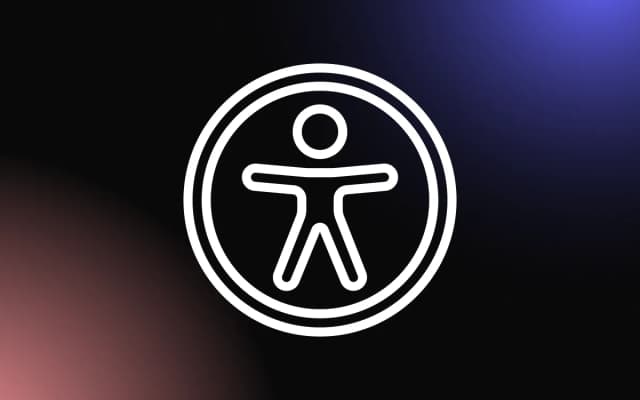
There is a huge demand for web developers in the technology-focused world we live in today, meaning it’s essential for developers to do all they can to set themselves apart from the crowd. One thing that could help in this endeavor is a well-designed, informative portfolio website.
A web developer’s portfolio gives anyone looking to learn more about your skills, experience, and who you are as a developer a one-stop source for answers to all of their questions. With the right design, your portfolio could even get you hired on the spot!
But, before you can start designing a portfolio website, it’s important to understand what your site will include and what has worked for successful developers in the past.
Why Not Enhance Your Portfolio by Creating Apps on Common Ninja’s Developer Platform
What Is a Web Developer Portfolio?
An online portfolio can help web developers showcase their skills, experience, and projects to potential clients. It includes many of the same elements as a traditional resume, but with the added benefit of helping you build experience by creating a good-looking, functional, and user-friendly website. For this reason, your portfolio website itself can serve as an example of your skills and talents.
Some web developers find portfolio websites unnecessary. In this day and age, there are lots of other ways to share your work and talent online, including:
- Dev.to
- GitHub
- Dribbble
But, the biggest benefit of having your own portfolio website is having another personal project to show potential clients or employers. If it’s designed well, someone could decide to hire you based on your portfolio website itself!
Things To Include in Your Web Developer Portfolio
Your web developer portfolio could be the key to getting hired in your desired field. Creating a portfolio website will help you prepare to discuss your past work, as well as let any interested clients know what you can and want to do. For this reason, it’s essential to include all the key elements on this website. Some of the things you want to highlight include:
- Contact information
- About section
- Skills
- Education
- Relevant experience
- Personal projects
- Awards & special recognition
- Blog articles
- A great design
Now, let’s discuss what each section of your portfolio should highlight.
Contact Information
One of the most important elements to include in your web developer portfolio is your contact information. If prospective clients don’t know how to get a hold of you, it’ll be difficult for you to book any work at all! Some developers choose to include their contact information at the top of their portfolio, while others have it listed at the bottom of the screen. Some even choose to list their name and email at the top, then include social media links at the bottom.
Whatever method you choose, be sure it’s easy for clients and employers to find. Include the following information somewhere on the page:
- Your name
- Title (if looking for specific positions)
- Business email address
- General geographic area you want to work in (if applicable)
You can include also a downloadable version of your resume, as well links to relevant social media profiles, including:
- Dev.to
- GitHub
- Dribbble
About Section
A short “About” section can help clients and potential employers get to know you, the person behind the code, a little bit better. While some developers choose not to include an About section, hiring managers and potential freelance clients generally prefer to hire developers they can relate to.
The point of an About section is to show your personality. In this section, you can branch out from your typical web developer skillset and highlight your interests, hobbies, or interesting experiences you’ve had throughout your time as a developer. Consider adding a small photo of yourself to this section, as well. When people can put a face to a name, they tend to trust you more.
Skills
While some clients may not know anything about programming languages, APIs, and all the other skills a successful web developer needs, others will be looking for developers who are familiar with very specific practices. Your skills section should include mostly “hard skills,” or learned abilities, but listing a couple of “soft skills,” such as always completing work by a set deadline or stellar communication, could set you apart. When listing your hard skills, be sure to include your proficiency level in each. Start your list with your expert skills, then work down to those you have a basic understanding of. Always keep the list relevant to the type of work you want to do in the future.
Education
A web developer’s experience in the field generally speaks more than their education level. However, if you have received any degrees or certifications in the technology field, why not include it in your portfolio?!
Be sure to only highlight degrees and certifications related to web development or other technology-related disciplines. If you do have a degree in this field, you should only include your highest level of formal education.
Relevant Experience
Your previous work experience is one of your biggest assets as a web developer. So, when creating your portfolio, you’ll want to include a section to highlight all your relevant professional experience.
Under each heading, thoroughly explain your role and responsibilities at the company. Discuss things like the skills and tools you used, how you solved specific problems, and what you learned or gained from the overall experience. If possible, you may even want to include testimonials from your previous clients or employers to back up your claims.
Personal Projects

You can highlight personal projects you’ve completed in the past in addition to or in place of work experience or education. Like work experience, past personal projects say a lot about you as a developer. It shows passion for your trade, lets employers know that you know how to solve specific problems, and can give you something specific to discuss during an interview.
Personal projects may include things like:
- Blogs
- Websites
- Applications or plugins
Whatever projects you choose to showcase in your portfolio, make sure to keep it relevant to the kinds of projects you’d be interested in working on in the future.
Awards & Special Recognition
Not every web developer can say that they’ve won awards or received other special recognition within the industry. So, if you have, you’ll definitely want to mention it on your portfolio website.
Maybe you’ve created an award-winning website or app, or perhaps you’ve presented a speech or talk at a big national conference. You can even mention things like writing articles for well-known tech or development blogs in this section. If you’ve received any kind of recognition for your development skills, this is the perfect place to highlight it.
Blog Articles
Some developers choose to add a “Blog” section to their portfolio. If you can write well or have a lot of knowledge to share with others, doing so can be very beneficial and get your portfolio in front of more people than ever.
Having a regularly-updated blog on your portfolio website will show potential clients or hiring managers that you can back up the claims on your resume. It can also showcase more of your personality and give people a taste of what you’ll offer their organization. Plus, with the right SEO techniques, your articles could even drive additional traffic to your portfolio.
A Great Design
Perhaps the most important thing to include on your portfolio website is an excellent design that speaks to your skills as a web developer. Having a good-looking, user-friendly portfolio website will show anyone looking to work with you how they can expect your development skills to translate on-screen.
The website you create should be easy for users to navigate and find the information they are looking for. Take your time while creating it, as this is an excellent opportunity for you to get hands-on experience with building the best website in a pressure-free setting. Before you take your site live, test it on several different browsers, including mobile, to ensure it looks professional on all devices.
Inspiring Web Developer Portfolio Websites
Perhaps you now understand the importance of having a web developer portfolio, but aren’t quite sure where to begin. In that case, there’s nothing wrong with looking at other successful developer’s portfolio websites and taking inspiration from some of the aspects they include.
Below, we’ll highlight five portfolio websites from a few of the most successful web developers, including:
- Jack Jeznach
- Bruno Simon
- Gift Egwuenu
- Brittany Chiang
- Oluwadare Oluwaseyi
Jack Jeznach
Jack Jeznach is a well-known WordPress expert and front-end web developer. When you visit his portfolio website, one of the first things you’ll notice is how he seamlessly integrates simple animations that really add a unique element to the site. On the left side of the page, you’ll find a simple navigation bar to help visitors find exactly what they’re looking for without too much digging.
Jack utilizes a sleek, easy-to-read color scheme and eye-catching visual elements, such as a logo carousel of companies he’s worked with in the past. This is a great example of a simple, yet informative portfolio design that stands out from other developers.
Bruno Simon
Bruno Simon has perhaps one of the most unique portfolio designs out there. With past experience as the lead developer at Uzik and Immersive Garden, his website is a clear depiction of just how much he can do for clients.
His entire portfolio website is an interactive game, where you can use your keyboard controls to explore the page in an animated Jeep. As you scroll through, you’ll find information on his past work experience, personal projects, and how to contact him for work.
While this is an incredibly unique example of a portfolio and features excellent aesthetics, it is a bit more difficult to navigate than other portfolio sites. However, the design of his website itself showcases just how well he can develop an interactive site.
Gift Egwuenu
Gift Egwuenu’s portfolio is a great example of how a portfolio doesn’t need all the bells and whistles to be effective. Gift is a front-end web developer and content creator with over five years of experience. Her experience is mostly highlighted through her blog, or the “Writing” section of her navigation bar.
The site’s design is simple, yet very elegant. She uses no distracting colors or animations and links all her social media accounts on the homepage. Gift’s portfolio is set up in a unique way that lets her work and writing speak for itself, rather than being set up like a traditional resume.
Brittany Chiang
If you want to create a portfolio that keeps things simple yet still catches the viewer’s eye, you should definitely visit Brittany Chiang’s portfolio for some inspiration. She uses a single-page design that highlights exactly who she is, her past work experience, and projects she’s worked on over the years, including a course on how to build a Spotify-connected app.
While you can scroll down the page to find any information you’re looking for, she also includes a sticky navigation header that will jump down to the section you click on. The color scheme is consistent throughout and easy to read, ensuring an excellent user experience for each visitor.
Oluwadare Oluwaseyi
Oluwadare Oluwaseyi is a front-end developer with a great-looking portfolio design. At the top of the page, you’ll find his contact information and the “About” section, and as you scroll down the page, you’ll find a featured project section with clickable links.
One unique section Oluwadare includes is an “Icebreakers” heading. Here, he discusses a couple of his personal interests, seamlessly linking his Spotify profile and email within the text. He uses large, responsive headings to break his sections up, and of course, links his relevant social media profiles at the bottom of the page.
Bonus: Daniel Sternlicht
Our very own CEO and talented developer, Daniel Sternlicht, has created an amazing portfolio some 10 years ago, using ancient technology.
It is an interactive portfolio that utilizes a 2D game to showcase his talent and offer information about his skills in a fun and engaging way.
Get Inspired and Create Your Own Web Developer Portfolio
Creating a portfolio is an excellent idea if you’re looking to get more work as a web developer. It’s essentially a one-stop shop for clients and employers looking for any information they can find to decide whether or not you’re a good fit for their company.
There are a few essential elements that any portfolio website should include, such as contact information and a description about or link to projects you’ve worked on personally. Keep in mind that your portfolio’s design is a direct reflection of your skills. For this reason, it’s essential to plan each section carefully to showcase your web designing skills. If you don’t know where to begin when creating your portfolio website, consider taking inspiration from other successful developers.


